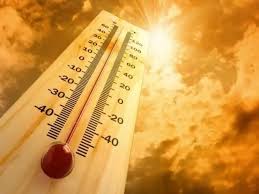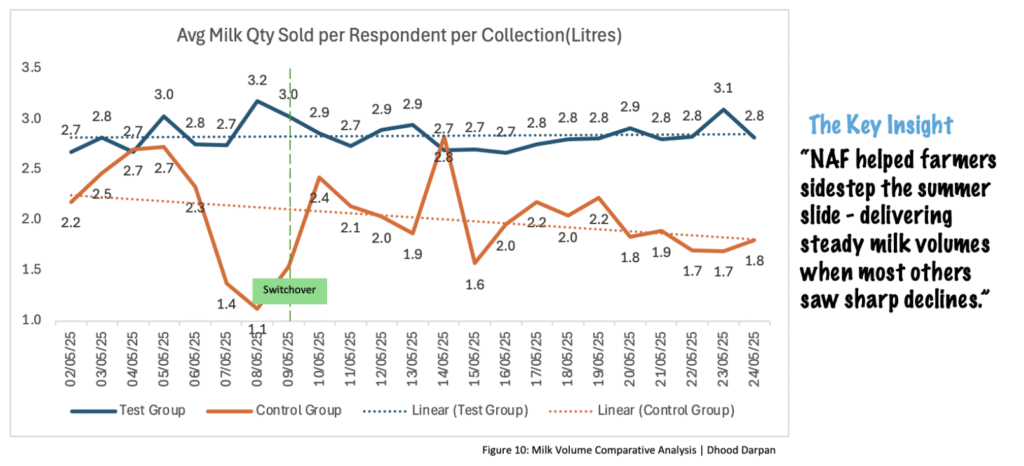Weathering the Heat
NAF’s Role in Preserving Milk Yield Under Summer Stress

India’s dairy belt swelters during summer months, with temperatures often exceeding 38 °C. Heat stress can slash milk yields by 10–20 %, as cows and buffaloes eat less, drink erratically, and divert energy toward thermoregulation rather than lactation. For smallholders, this volatility hits incomes just when household expenses (e.g., monsoon repairs) rise.
The Doodh Darpan study by Shunya Agritech was designed to coincide with a blistering heat spell, typical of Indian summer in north India. Regular milk-testing, twice daily (AM & PM milking cycles) was undertaken and digitally tracked by the researchers. Two herds – the NAF group and the control – faced identical weather, housing, and milking routines.
Key Finding: Only 2 % Yield Drop vs. 15 %
NAF-fed animals saw saleable milk dip from 2.87 L to 2.82 L per milking (a mere 2 % decline), while the control group slumped from 2.26 L to 1.92 L (a 15 % drop)

Economic impact: Assuming ₹50/L, NAF farms lost ~₹1.50 per session, versus ~₹10 for control – a 7× reduction in heat-related losses.
Mechanism hypothesis: NAF’s high moisture content (85 %) likely aided hydration and rumen buffering, while its rapid fermentability may produce lower heat increment than dry concentrates.
Download the full Doodh Darpan report for complete data and subgroup analyses:

